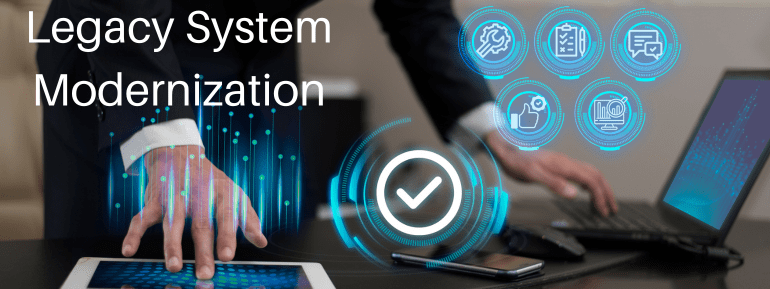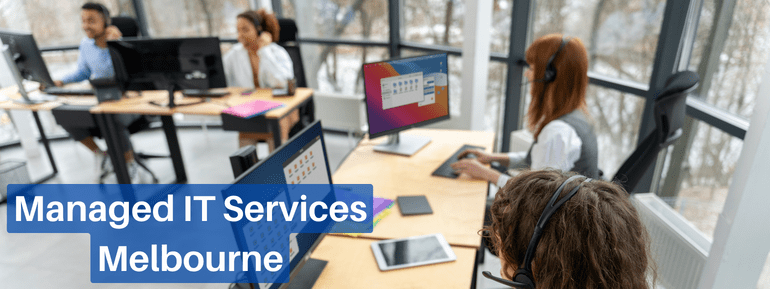You’re probably in one of two technology boats: Your plan to update your business has been in the planning stages for years. You’ve started Cloud Migration but still need to be in a thoroughly Modern Workplace. When the topic of moving forward comes up, the reasons to wait come up quickly and seem reasonable: It’s expensive, could be upsetting, will take a lot of internal resources, and could fail. Also, you’ve gotten this far using your old tools. What’s the harm in waiting a little longer?
Thinking carefully about the next steps in your tech journey is okay. With the way business technology is and what is expected of it now, it’s better to do something or use ad-hoc technology with Modern Workplace to meet new needs.
Your business will gain in both the short and long run if you keep your technology up to date. Waiting to update your business technology, especially your enterprise resource planning (ERP) system, comes with many limits, costs, and risks, no matter what field you work in.
Costs and Limits of Staying Put
Legacy, on-premises systems can only give your business some of what it needs to succeed and grow in today’s competitive world as Cloud-based systems can, and they cost more than you might think. After Modern Workplace is set up, a Cloud-based system costs a fixed monthly membership fee. It also removes the need to replace hardware, update and upgrade software, store and protect data, and have IT staff do essential maintenance instead of developing new ideas and improving business processes.
Recent studies on moving old platforms like Finance & Operations and Business Central to the Cloud have shown a payback time of less than one year and an ROI of anywhere from 109% to 162% in less than three years. Cloud Migration has led to a 10% decrease in hiring and staffing needs for SMB businesses.
As your software companies release new solutions, they often stop providing help for your older on-premise systems. When this happens, you won’t be able to get the updates and new features you need to compete. Companies often look for quick fixes, like making time-consuming or temporary workarounds or paying for third-party software apps to fill in missing features. These options are wasteful, expensive, and only work in the short term. It’s like falling in quicksand while your rivals are racing ahead.
Even if you can get enhancements and new features, it takes a lot of time and resources to install updates manually and use capital funds to pay for them upfront. Due to limited budgets and resources, many companies have to skip essential transformations.
Additionally:
- Having to do updates by hand is likely to stop several business tasks.
- The amount and number of files that can be stored are limited by the computer room. To make it bigger, you have to buy more cash up front.
- On-premises tools cost a lot of money upfront.
- Legacy technology is hard to change as a company grows, and business needs change, so you may end up paying for tools you do not even use.
- Legacy systems do not talk to each other easily because they are not linked or don’t fit together well. When it comes to data uniformity and data security, this is a big problem.
- On-premises systems don’t help people work together as Cloud-based systems Modern Workplace do.
8 Risks of Using Outdated Technology in Your Business
Limitations and costs are often easier to spot because you can point to current costs or lack of usefulness. Risks are different because they represent both options and missed opportunities. There are too many significant risks to sticking with old technology to ignore them.
Risk #1 – Reduced Efficiency
Outdated technology can make your business less efficient by slowing down processes and adding more human work. Old systems often don’t have the advanced features and functions of Modern technology. This makes chores take longer and be less organized. This delay can lead to lost output and make it harder to meet customer needs on time.
Risk #2 – Security Vulnerabilities
Using old technology opens up your business to several security risks. Older systems may need the latest security fixes or standards, making them more vulnerable to hacking and data breaches. Hackers and hackers are always developing new ways to attack weaknesses in old software. This risks your private business data, customer information, and intellectual property.
Risk #3 -Compatibility Issues
A legacy technology might not work with modern software, tools, or hardware parts. This lack of flexibility can make adding new solutions to your current technology system very hard. It can make it hard for you to work with partners or clients who use modern systems and stop you from taking advantage of the latest innovations to improve your business.
Risk #4 – Limited Support and Maintenance
Most vendors and manufacturers offer little help or upkeep for technology that is getting old. This means that it can be hard or even impossible to find new parts, get changes in a fast manner, or get expert help. If you need the right help, your business may have more downtime and spend more money trying to keep old systems going.
Risk #5 – Inadequate Scalability
Outdated technology often doesn’t have the flexibility you need to grow and expand your business. As your business grows, you may need to handle more work, help more users, or move to Modern Workplace and solutions to meet changing customer needs. Older systems might not have the capacity or freedom to adapt to these changing needs, making it harder to grow your business.
Risk #6 – Competitive Disadvantage
If your business uses old tools and systems, it will be at a loss compared to rivals adopting new ones. Competitors with better technology can offer better goods or services, come up with new ideas faster, and better meet customer needs. If you don’t keep up with changes in technology, you could lose market share and possible customers who want more advanced choices.
Risk #7 – Employee Frustration and Disengagement
Employees who are used to easier-to-use and more efficient methods in their daily lives can get frustrated by old technology. Outdated technology can make employees happier and less productive and also increase the number of people who leave their jobs. A workforce who are forced to use old tools may lose interest and motivation. This can make it hard for them to work together and stop them from coming up with new ideas.
Risk #8 – Increased Costs in the Long Run
Upgrading to new technology may cost more at first, but using old systems can end up costing more in the long run. Repairs, upkeep, and solutions are often needed to keep old technology running. These extra costs can significantly affect your bottom line over time when added to lost output and possible security breaches.
To keep these risks from hurting your business, reviewing and updating your technology base often is essential. Using safe and modern technology solutions can improve speed, boost security, support innovation, and keep a competitive edge in your field.
Modernize, and Great Things will happen.
Modernizing the technology in your business will help you cut costs, get rid of limits, and avoid dangers. With a Modern Workplace, like Microsoft Office 365, you will get:
- Reduce costs, save time with automatic updates, and efficient resource allocation.
- Remove limitations and streamline operations through integrations and automation for higher productivity.
- Mitigate risks with top-tier security measures, defending your infrastructure and data.
- Ensure compliance with changing standards using improved controls and features.
- Enhance mobility and flexibility for teams to work anytime, anywhere, and collaboratively.
- Improve decision-making with real-time, unified data for data-driven insights.
- Attract top talent with a modern technology stack and innovative solutions.
- Utilize the entire Microsoft ecosystem for seamless integration and enhanced capabilities.
Get Rid of The Old and Bring in the New and Better
Modernizing business technology is no longer a luxury; it has become necessary in today’s rapidly evolving digital landscape. Failing to embrace modern solutions poses significant risks and can hinder the growth and success of your business. By recognizing the potential dangers of not modernizing, you can take proactive steps to avoid these risks and position your organization for long-term success.
At TECHOM Systems, we are dedicated to helping businesses modernize their technology stack. As a trusted Microsoft Solutions Partner, we offer tailored solutions for the Modern Workplace, Cloud-based platforms, and more. Our expert team will guide you through the transformative process, aligning technology with your business objectives.
Do not let outdated technology hold you back—partner with us for a journey of technological transformation that drives your business forward.
Contact us today to get rid of old and outdated technology and embrace the Modern Workplace.













